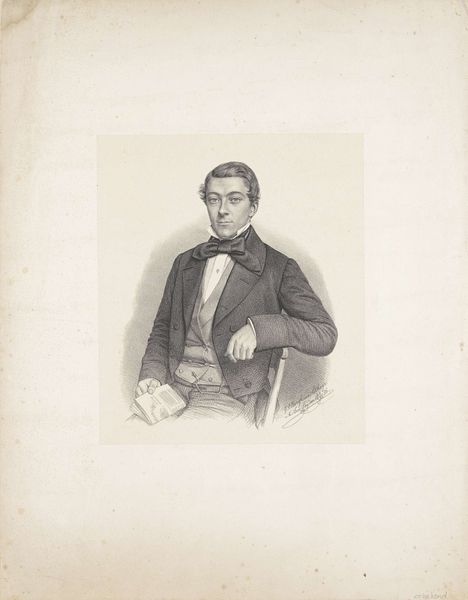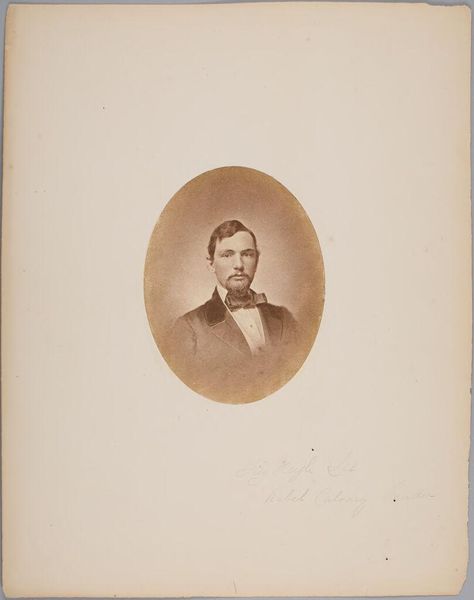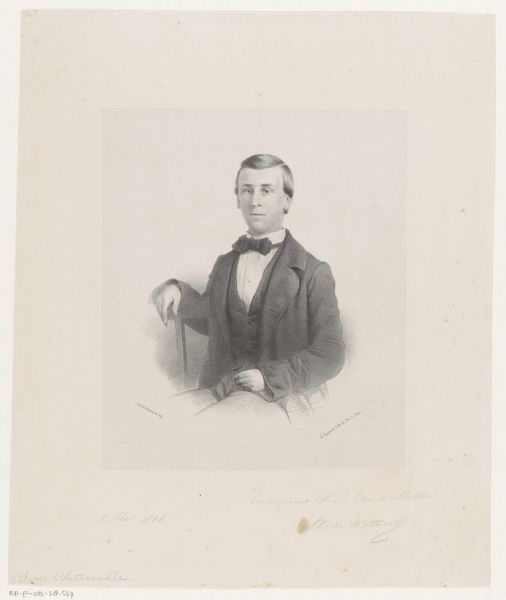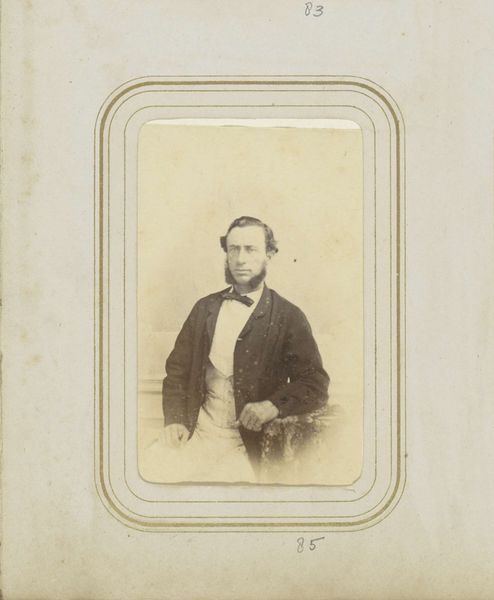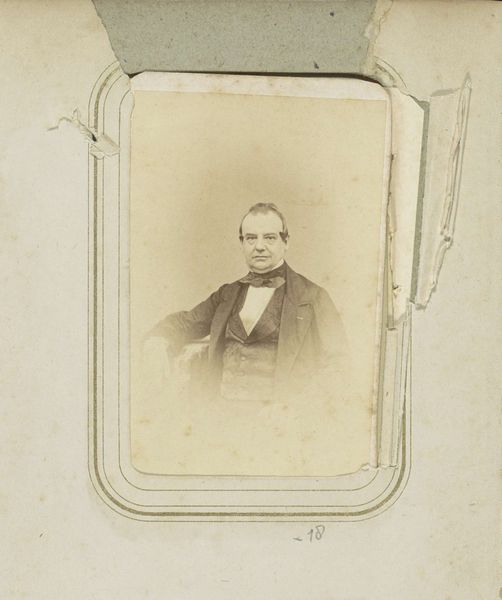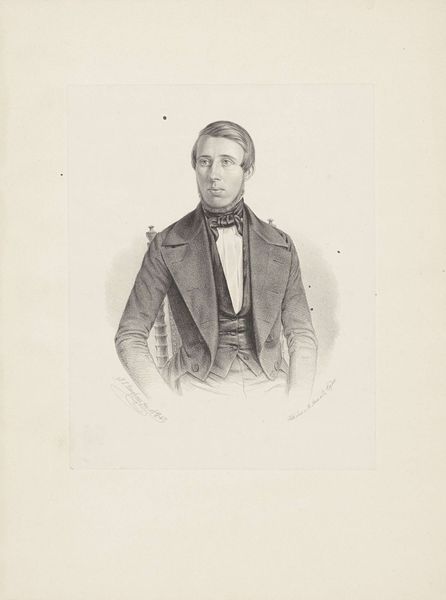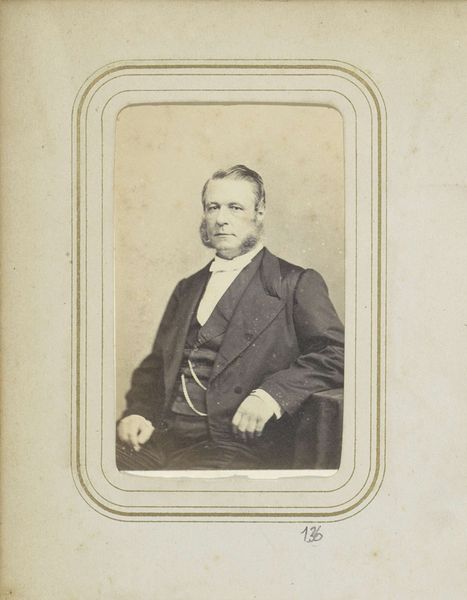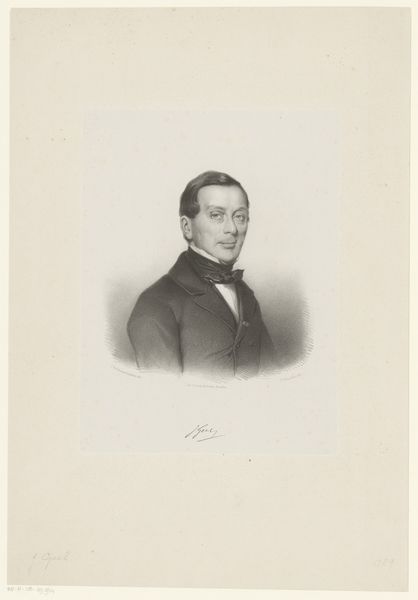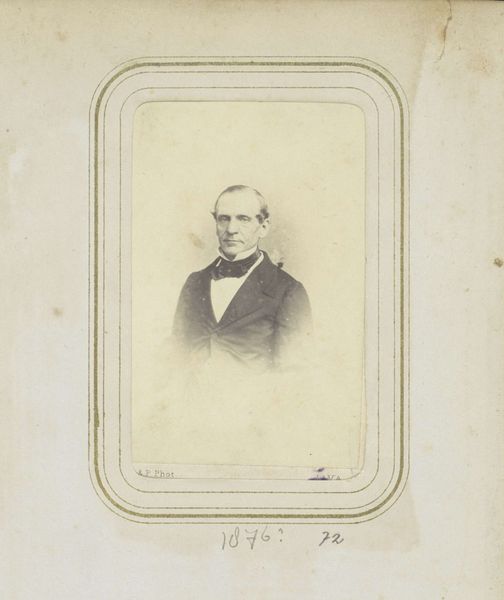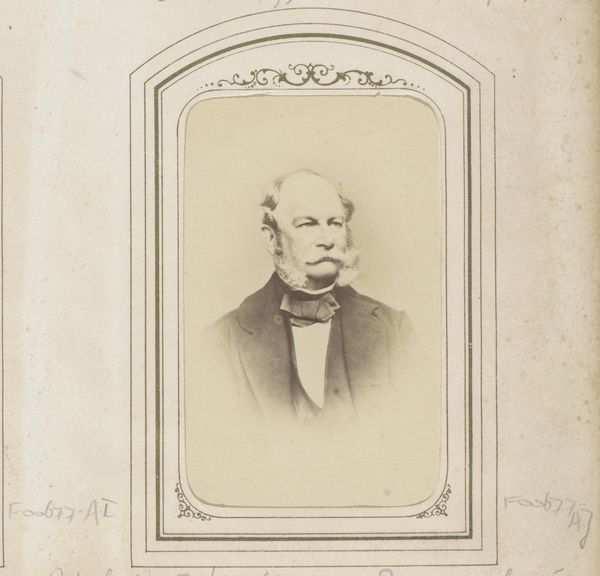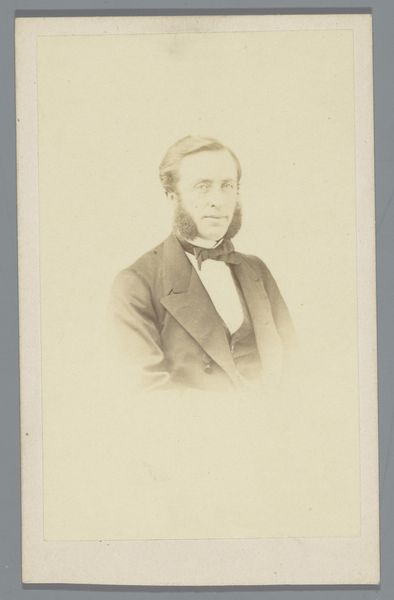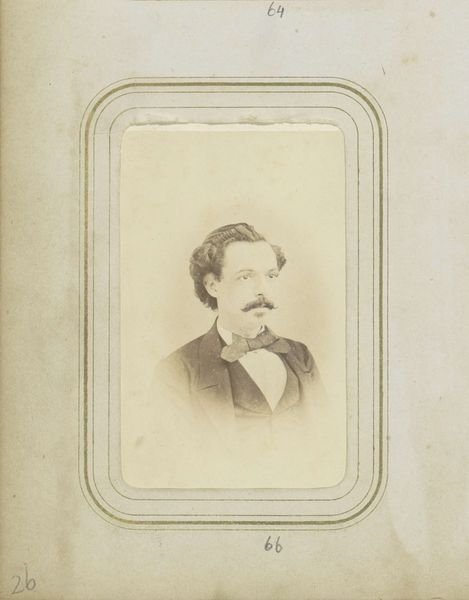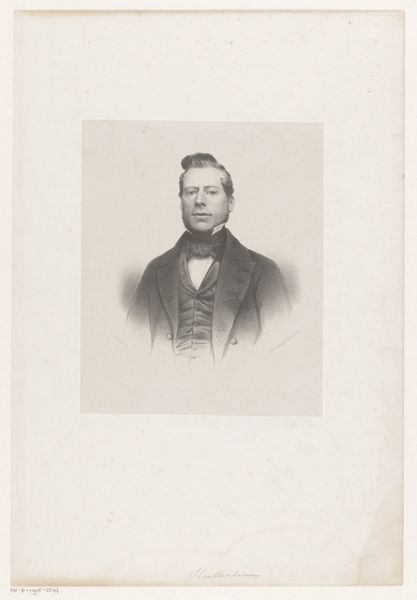
Portret van mogelijk oud-resident N.D. Lammers-Van Toorenburg c. 1857 - 1870
0:00
0:00
photography
#
portrait
#
photography
Dimensions: height 88 mm, width 56 mm, height 97 mm, width 62 mm
Copyright: Rijks Museum: Open Domain
Curator: I’m immediately drawn to the seriousness in this portrait, that stark, unblinking gaze. He looks like he holds the weight of the world on his shoulders, don't you think? Editor: He certainly projects authority, doesn't he? We're looking at a photograph titled "Portrait of Possibly Former Resident N.D. Lammers-Van Toorenburg," made sometime between 1857 and 1870 by Woodbury & Page. A very early example of portrait photography. Curator: It’s beautiful. Almost ghostly, this man caught in time, peering out from a world long gone. There’s such fragility to the paper too; you just want to hold it gently and listen to its whispers. Editor: And what's fascinating is the identity embedded within colonial portraiture. The sitter’s assuredness is fascinating when we remember the photographic control, but also think of the political and racial hierarchies present in Dutch colonial society at the time. Curator: Oh, definitely. Knowing the title, you see it in his eyes. He seems caught between wanting to convey strength but ultimately only showing weariness. Do you get a sense of who the colonizers really were from photos such as these? Perhaps more accurately so, as he does seem stripped bare in a way. Editor: I find myself looking at this with a critical eye, wondering about the choices made. He presents a certain power, this Lammers-Van Toorenburg. What was he like at home? What kind of colonial policies did he support? Were people of colour also sitting in this very photography studio at some point? How were *they* portrayed? Curator: It also begs the question, if someone was tasked to take *your* photo and immortalize you to stand the test of time, what kind of performance would you put on? Does it have the ring of truth when the medium itself necessitates such calculated rigidity and stagedness? Editor: That sense of stagedness brings forth the inherent artifice in identity creation, doesn’t it? In seeing that in these historical records, perhaps we can better critique similar projections in our own time. Curator: Right, there’s something unexpectedly present that asks us to reflect, not just at his life, but at our very own humanity. Editor: Precisely. It’s a quiet challenge. Let’s step into that quiet now and allow the weight of his world—and ours—to sink in for a moment.
Comments
No comments
Be the first to comment and join the conversation on the ultimate creative platform.
